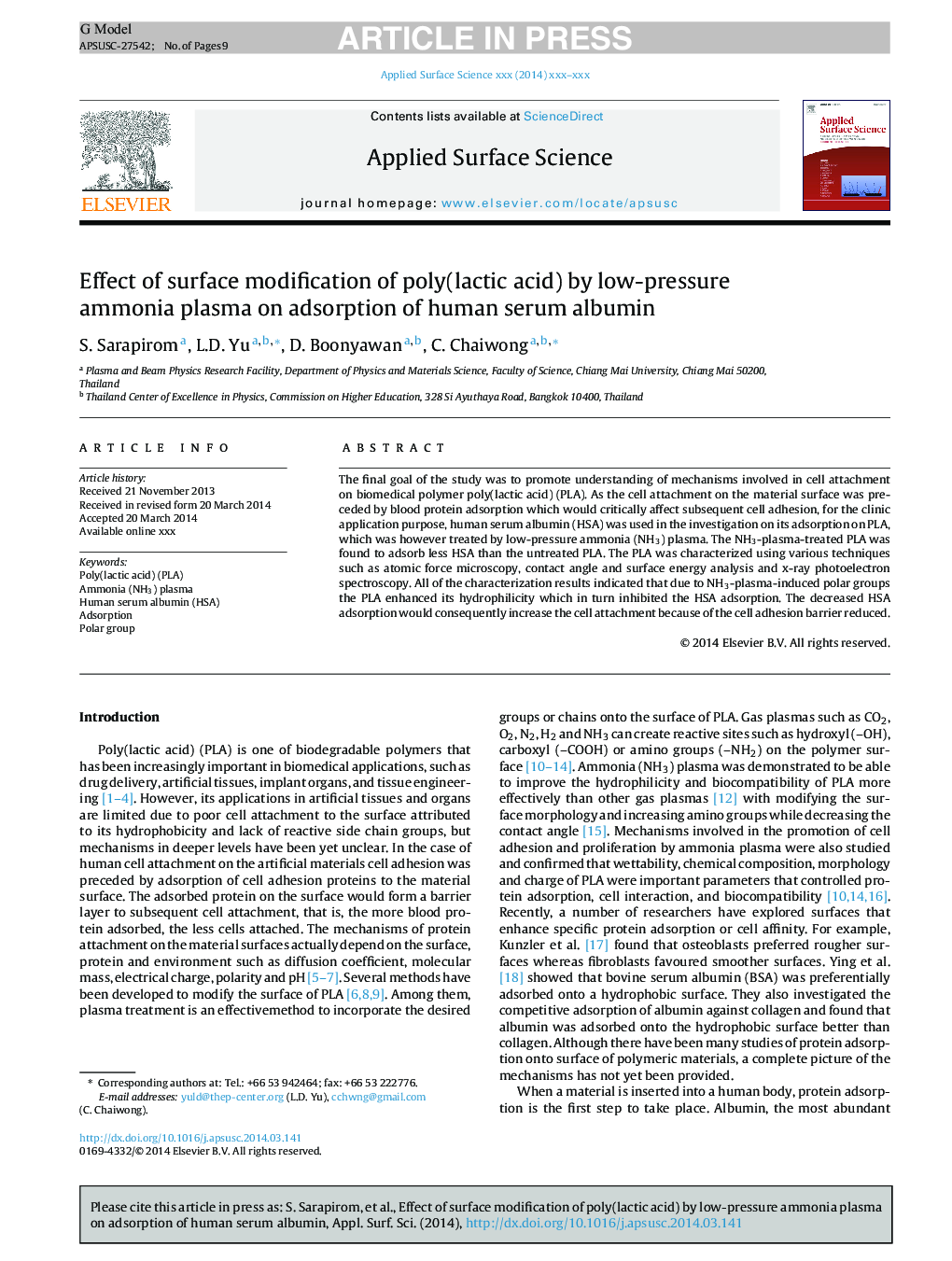| Article ID | Journal | Published Year | Pages | File Type |
|---|---|---|---|---|
| 5356641 | Applied Surface Science | 2014 | 9 Pages |
Abstract
The final goal of the study was to promote understanding of mechanisms involved in cell attachment on biomedical polymer poly(lactic acid) (PLA). As the cell attachment on the material surface was preceded by blood protein adsorption which would critically affect subsequent cell adhesion, for the clinic application purpose, human serum albumin (HSA) was used in the investigation on its adsorption on PLA, which was however treated by low-pressure ammonia (NH3) plasma. The NH3-plasma-treated PLA was found to adsorb less HSA than the untreated PLA. The PLA was characterized using various techniques such as atomic force microscopy, contact angle and surface energy analysis and x-ray photoelectron spectroscopy. All of the characterization results indicated that due to NH3-plasma-induced polar groups the PLA enhanced its hydrophilicity which in turn inhibited the HSA adsorption. The decreased HSA adsorption would consequently increase the cell attachment because of the cell adhesion barrier reduced.
Related Topics
Physical Sciences and Engineering
Chemistry
Physical and Theoretical Chemistry
Authors
S. Sarapirom, L.D. Yu, D. Boonyawan, C. Chaiwong,
